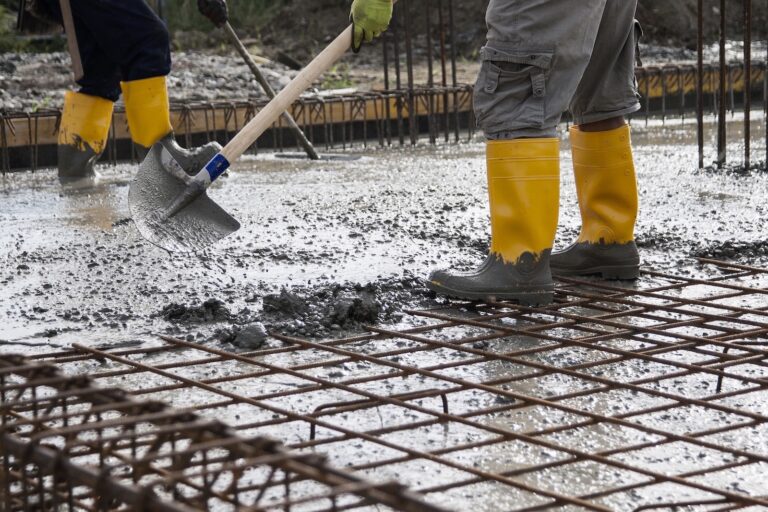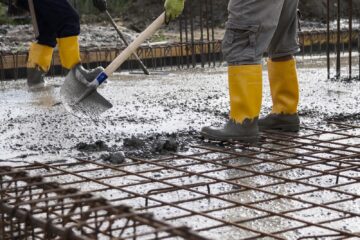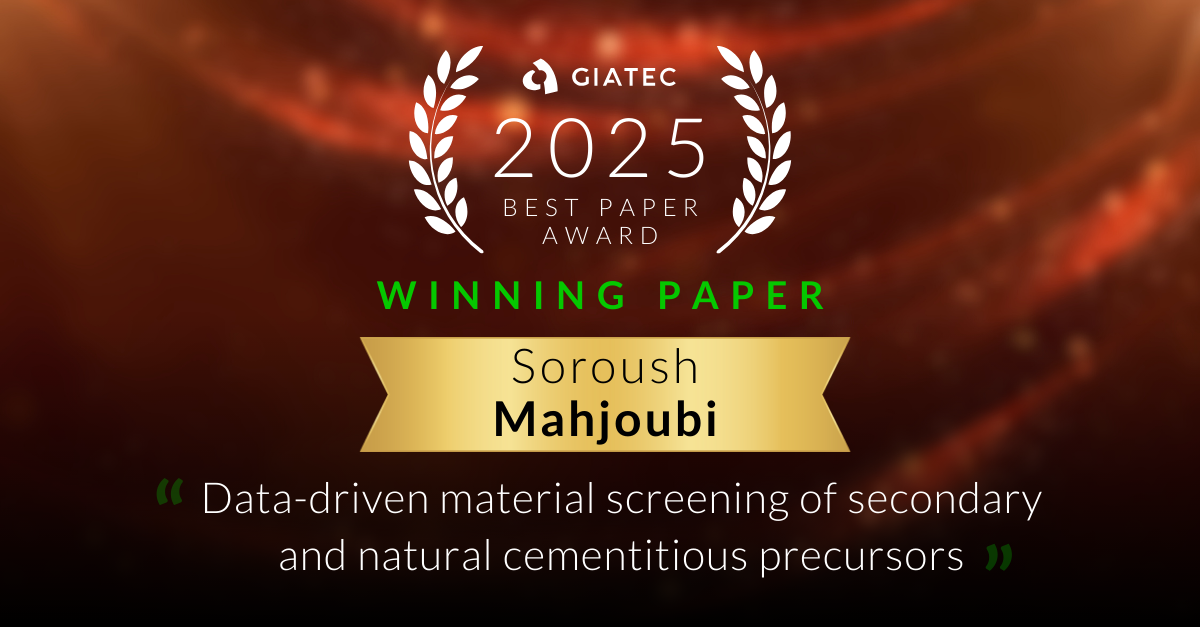Concrete is a fundamental material in construction, and its performance is highly dependent on its curing process. Understanding how long concrete should cure before loading is crucial to ensure structural integrity and safety. This blog delves into the curing period required for concrete, explores relevant standards, and examines how modern technologies like sensors and the maturity method can optimize this process.
SmartRock® Long Range Savings for Big Projects
The Importance of Proper Curing
Curing is essential to concrete development because it directly affects its strength and durability. According to the American Concrete Institute (ACI), proper curing helps maintain the moisture level, temperature, and chemical environment required to hydrate cementitious materials in concrete. Inadequate curing can lead to incomplete hydration, resulting in reduced strength and increased susceptibility to cracks and other defects. ACI 318 outlines the requirements for concrete curing, including the necessity of maintaining adequate moisture and temperature. It also specifies minimum curing periods for different types of concrete mixes.
How Long Should Concrete Cure?
The general rule of thumb is that concrete should cure for at least 7 days to achieve a significant portion of its potential strength. This period can vary depending on the concrete mix, environmental conditions, and loading requirements. For instance, special concrete mixes or extreme environmental conditions might necessitate longer curing times.
SmartRock® Long Range Savings for Big Projects
Monitoring Concrete Strength
1. Break Tests (Compression Tests)
Break tests, or compression tests, are traditional methods for evaluating concrete strength. Concrete samples are taken from the batch and tested for compressive strength at various ages, typically at 7, 28, and sometimes 56 days.
- Procedure: Concrete cylinders or cubes are cast and cured under controlled conditions. After curing, these samples are tested in a compression testing machine to determine their maximum load-bearing capacity.
Break tests provide a direct measure of concrete strength but require time for curing and testing, which can delay construction progress. Therefore, other methods often complement break tests to provide a more immediate assessment of concrete strength.
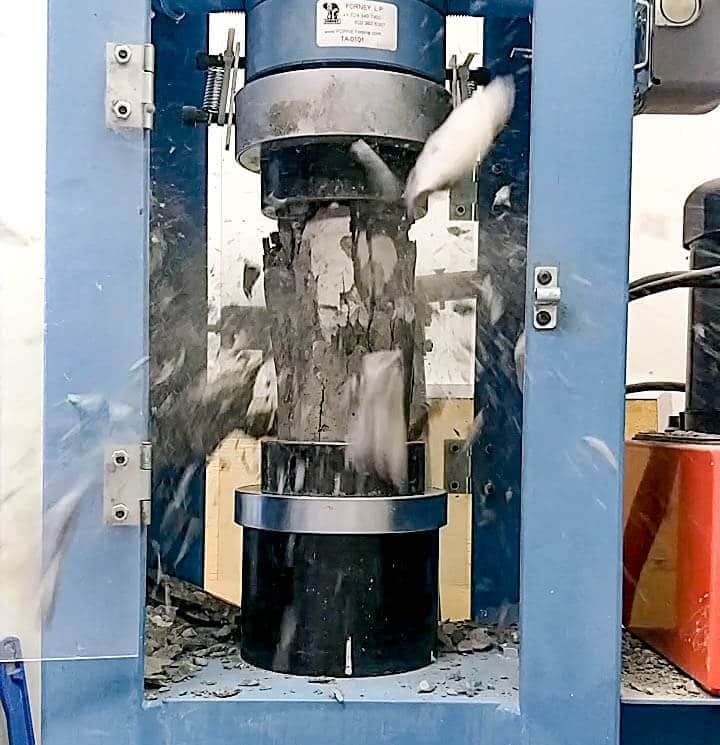
2. The Maturity Method
The maturity method offers a more real-time approach to estimating concrete strength based on its temperature history. This method uses temperature sensors embedded in the concrete to continuously monitor temperature fluctuations and calculate the concrete’s maturity index.
- How It Works: Temperature influences concrete strength development. The maturity method calculates a maturity index, which correlates temperature history with concrete strength using a maturity function. This provides an estimate of the concrete’s strength without requiring physical break tests.
The maturity method is beneficial for all types of projects and situations that need real-time strength assessment. It helps optimize curing times and determine when concrete is sufficiently strong for loading or form removal.
The Role of Sensors and the Maturity Method
Modern advancements have introduced more precise methods to determine when concrete has reached sufficient strength for loading. Imagine working on a high-rise building where the concrete for a post-tensioned (PT) deck needs to be cured sufficiently before the cables can be tensioned. Traditionally, this process requires waiting for lab results to confirm when the concrete has reached sufficient strength, which can delay progress. However, with modern advancements, the maturity method using embedded sensors can transform this approach. Integrating sensors into the concrete provides real-time data on temperature and strength through continuous monitoring. Suppose the sensors indicate that the concrete is reaching the required strength much earlier than expected. In that case, the construction team can safely proceed with tensioning the cables, reducing the waiting period significantly and accelerating the project timeline.
When embedded in concrete, SmartRock® sensors can track the concrete’s thermal history, offering precise insights into its curing process. This immediate feedback allows for more efficient scheduling and reduces reliance on external testing. According to ASTM C1074, the maturity method allows for the prediction of concrete strength based on its temperature history, providing a more accurate assessment of when concrete can safely be loaded or when forms can be stripped.
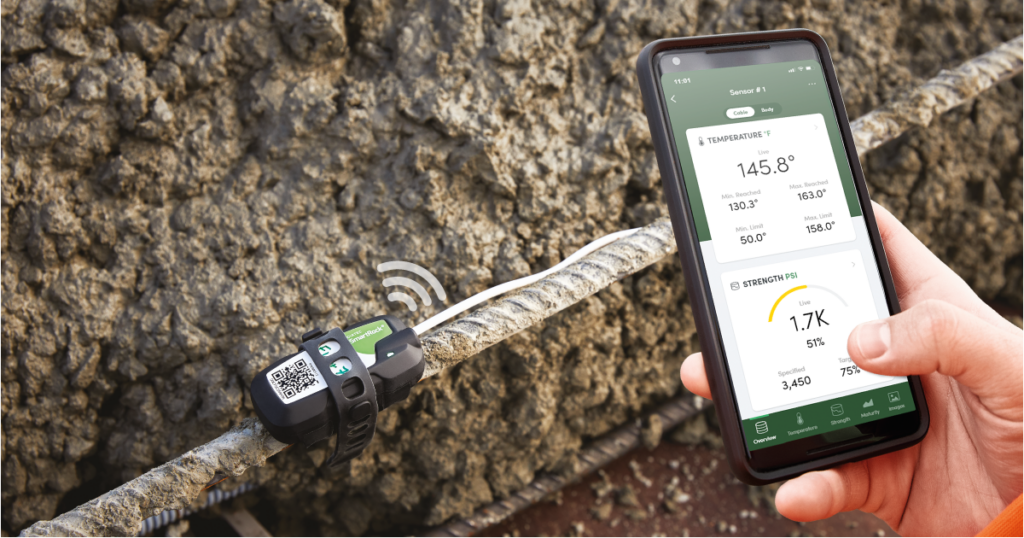
Conclusion
Determining how long concrete should cure before loading is critical to ensuring structural safety and durability. Following established standards like ACI 318-19 and ASTM C403 can provide a baseline, but modern technologies like sensors and the maturity method offer enhanced precision. By integrating these technologies into your construction practices, you can more effectively manage curing times and optimize the performance of concrete structures.
References:
- ASTM C403: https://www.astm.org/Standards/C403.htm
- ASTM C1074: https://www.astm.org/Standards/C1074.htm

